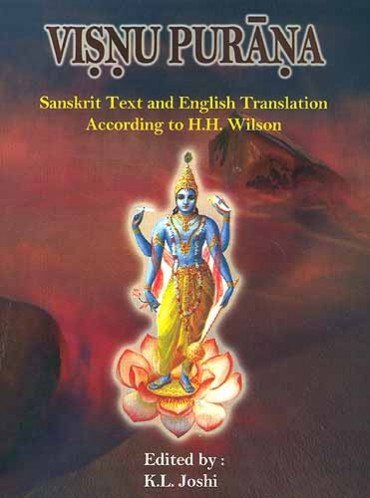The Vishnu Purana
by Horace Hayman Wilson | 1840 | 287,946 words | ISBN-10: 8171102127
The English translation of the Vishnu Purana. This is a primary sacred text of the Vaishnava branch of Hinduism. It is one of the eighteen greater Puranas, a branch of sacred Vedic literature which was first committed to writing during the first millennium of the common era. Like most of the other Puranas, this is a complete narrative from the cr...
10. The Brahma-vaivartta Purāṇa
10. Brahma-vaivartta Purāṇa. “That Purāṇa which is related by Sāvarṇi to Nārada, and contains the account of the greatness of Kṛṣṇa, with the occurrences of the Rathantara Kalpa, where also the story of Brahma-varāha is repeatedly told, is called the Brahma-vaivartta, and contains eighteen thousand stanzas[1].” The account here given of the Brahma-vaivartta Purāṇa agrees with its present state as to its extent. The copies rather exceed than fall short of eighteen thousand stanzas. It also correctly represents its comprising a Māhātmya or legend of Kṛṣṇa; but it is very doubtful, nevertheless, if the same work is intended.
The Brahma-vaivartta, as it now exists, is narrated, not by Sāvarṇi, but the Ṛṣi Nārāyaṇa to Nārada, by whom it is communicated to Vyāsa: he teaches it to Sūta, and the latter repeats it to the Ṛṣis at Naimiṣāraṇya. It is divided into four Khaṇḍas, or books; the Brāhma, Prakriti, Ganeśa, and Kṛṣṇa Janma Khaṇḍas; dedicated severally to describe the acts of Brahmā, Devī, Ganeśa, and Kṛṣṇa; the latter, however, throughout absorbing the interest and importance of the work. In none of these is there any account of the Varāha Avatāra of Viṣṇu, which seems to be intended by the Matsya; nor any reference to a Rathantara Kalpa. It may also be observed, that, in describing the merit of presenting a copy of this Purāṇa, the Matsya adds, “Whoever makes such gift, is honoured in the Brahma-loka;” a sphere which is of very inferior dignity to that to which a worshipper of Kṛṣṇa is taught to aspire by this Purāṇa. The character of the work is in truth so decidedly sectarial, and the sect to which it belongs so distinctly marked, that of the worshippers of the juvenile Kṛṣṇa and Rādhā, a form of belief of known modern origin, that it can scarcely have found a notice in a work to which, like the Matsya, a much more remote date seems to belong. Although therefore the Matsya may be received in proof of there having been a Brahma-vaivartta Purāṇa at the date of its compilation, dedicated especially to the honour of Kṛṣṇa, yet we cannot credit the possibility of its being the same we now possess.
Although some of the legends believed to be ancient are scattered through the different portions of this Purāṇa, yet the great mass of it is taken up with tiresome descriptions of Vrindavan and Goloka, the dwellings of Kṛṣṇa on earth and in heaven; with endless repetitions of prayers and invocations addressed to him; and with insipid descriptions of his person and sports, and the love of the Gopīs and of Rādhā towards him. There are some particulars of the origin of the artificer castes, which is of value because it is cited as authority in matters affecting them, contained in the Brāhma Khaṇḍa; and in the Prākrita and Ganeśa Khaṇḍas are legends of those divinities, not wholly, perhaps, modern inventions, but of which the source has not been traced. In the life of Kṛṣṇa the incidents recorded are the same as those narrated in the Viṣṇu and the Bhāgavata; but the stories, absurd as they are, are much compressed to make room for original matter, still more puerile and tiresome. The Brahma-vaivartta has not the slightest title to be regarded as a Purāṇa[2].
Footnotes and references:
[1]:

Click to view
[2]:
Analysis of the Brahma-vaivartta Purāṇa: Journal of the Asiatic Society of Bengal, June 1832.
